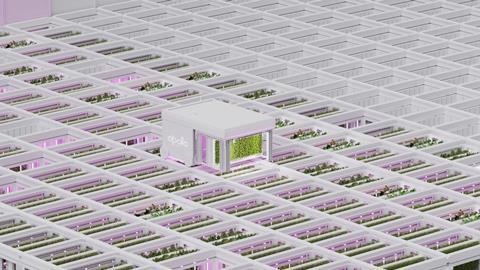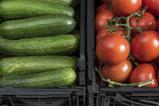A new production centre on the outskirts of Phoenix, Arizona, combines advanced indoor farming with futuristic warehouse distribution technology
Ask an AI chatbot to describe a farm of the future, and it will probably come up with something like this: In a windowless building on the edge of town, thousands of vegetables are grown in self-contained units that transport themselves around a precision-controlled growing environment to obtain the perfect balance of water and nutrients, before offering up their contents for harvesting.
Of course, that futuristic vision is no longer so far removed from present-day attempts to establish predictable growing environments that guarantee local supply of fresh produce. With technologies like LED lighting and hydroponics that offer unchanging growing conditions, controlled and automated indoor production of fresh fruit and vegetables is very much a reality.
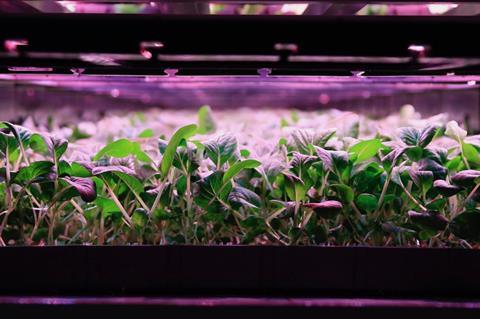
At the same time, the prevailing economic headwinds have made life difficult for this kind of futuristic farming enterprise of late, and have forced several high-profile startups around the world – including InFarm, AeroFarms, Jones Food Company, and Plenty Unlimited – to revise their business models drastically. But one such project backed by retail giant Whole Foods appears to have combined futuristic, controlled-environment agriculture with a modern, state-of-the-art logistics platform to good effect.
Inside an enormous warehouse that sits amid miles of urban sprawl to the west of Phoenix, Arizona, thousands of herbs and vegetables are grown in cubic, robot-powered bins that glide around a grid and adjust their own position to obtain the right balance of water and nutrients.
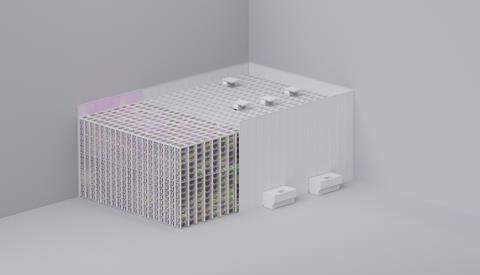
This is Opollo Farm, a fully automated vertical farm system that was constructed by OnePointOne in partnership with warehouse automation specialist AutoStore to grow organic produce year round. It currently produces leafy greens, microgreens, and herbs for sale under the Willo brand at a number of Whole Food stores nearby. And crucially, all of those products are ready in just 15 days, which is around half the time a traditional farm would take. Soon, it plans to add other products including strawberries and mushrooms.
For Whole Foods, the project certainly provides an answer to some of the biggest challenges in agriculture today: labour shortages, supply chain disruptions, water scarcity, and consumer demand for fresher, locally grown food. “We’re constantly exploring new ways to bring fresh, sustainable food to our customers,” says Chris Petroulakis, produce category manager at Whole Foods Market. “Opollo Farm is a perfect example of how advanced technology can revolutionise local agriculture, helping to deliver high-quality, locally grown produce right to our stores faster and fresher than ever before.”
Going on-grid
The idea of robotised cubes moving crops through a precision-controlled environment, adjusting their position to deliver the perfect balance of water and nutrients to plants inside them, is a novel concept even in a sector as cutting-edge as vertical farming. Such units are common in retail distribution centres run by the likes of Ocado, for example, but have so far not been employed in growing centres.
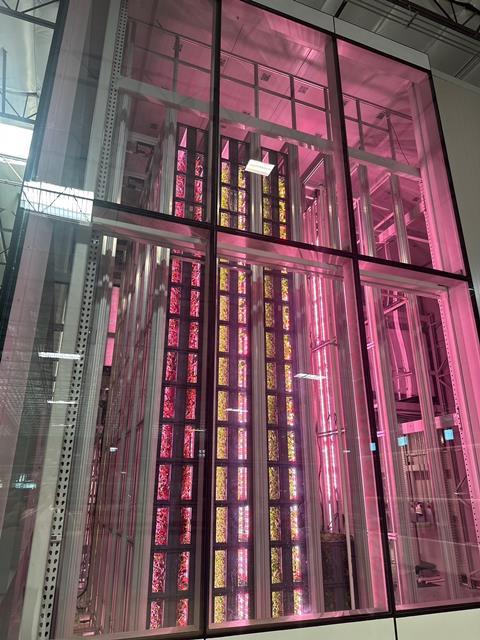
At Opollo Farm, the plants are seeded automatically, then immediately transferred to the grid for germination. Throughout their life, they move around depending on the environmental inputs – lighting, irrigation, and climate control – they need. And all the while, advanced software monitors each plant’s status and adjusts its conditions in real time, until it is ready to harvest.
“Opollo Farm shows what’s possible when proven automation meets global challenges like food supply resilience and sustainability,” says Parth Joshi, chief product officer at AutoStore. Sam Bertram, CEO of OnePointOne, believes its own technology combined with its partner’s modular robotics will mean crops can be grown “almost anywhere” using a fraction of the water and land usually required by traditional farming. “This collaboration helps overcome the cost and scalability challenges of vertical farming,” he says, “finally making locally grown produce – the number one priority for US consumers – possible even in urban areas.”



